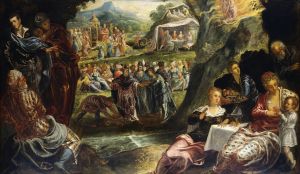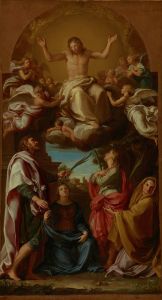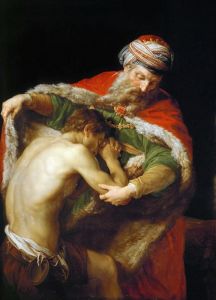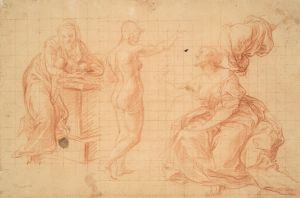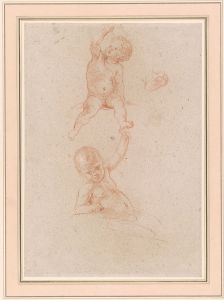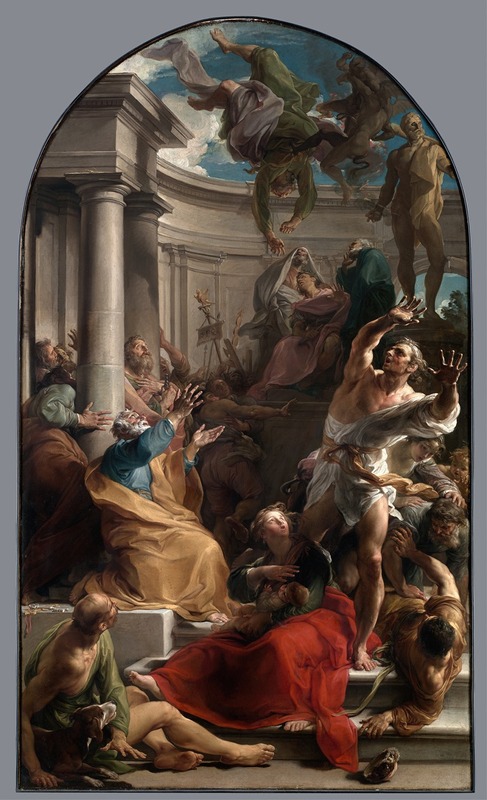
The Fall of Simon Magus
A hand-painted replica of Pompeo Batoni’s masterpiece The Fall of Simon Magus, meticulously crafted by professional artists to capture the true essence of the original. Each piece is created with museum-quality canvas and rare mineral pigments, carefully painted by experienced artists with delicate brushstrokes and rich, layered colors to perfectly recreate the texture of the original artwork. Unlike machine-printed reproductions, this hand-painted version brings the painting to life, infused with the artist’s emotions and skill in every stroke. Whether for personal collection or home decoration, it instantly elevates the artistic atmosphere of any space.
Pompeo Batoni's "The Fall of Simon Magus" is a notable painting that captures a dramatic biblical scene with the artist's characteristic attention to detail and composition. Batoni, an Italian painter of the 18th century, was renowned for his ability to blend elements of the Baroque and Neoclassical styles, and this work is a testament to his skill in depicting complex narratives with clarity and emotion.
The painting illustrates the story of Simon Magus, a figure mentioned in the Acts of the Apostles in the New Testament. Simon Magus was a Samaritan sorcerer who, according to Christian tradition, attempted to buy the power of the Holy Spirit from the apostles Peter and John. This act of attempting to purchase spiritual power gave rise to the term "simony," which refers to the buying or selling of ecclesiastical privileges. The narrative culminates in a dramatic confrontation between Simon and the apostles, which Batoni captures with vivid intensity.
In "The Fall of Simon Magus," Batoni depicts the moment when Simon, attempting to demonstrate his own supposed divine powers, is struck down by divine intervention. The painting is characterized by its dynamic composition and the dramatic use of light and shadow, which highlight the central figures and enhance the sense of movement and tension. Batoni's use of color and his meticulous attention to the details of the figures' expressions and gestures contribute to the painting's emotional impact.
The composition of the painting is carefully structured to draw the viewer's eye to the central action. Simon Magus is shown falling from the sky, his body twisted in a dramatic pose that conveys his sudden and catastrophic downfall. The apostles, particularly Peter and John, are depicted with expressions of righteous indignation and divine authority, emphasizing their role as the true bearers of spiritual power. The surrounding figures, including onlookers and other apostles, react with a mix of awe and fear, further enhancing the drama of the scene.
Batoni's work is notable for its blend of realism and idealism, a hallmark of his style. His ability to convey complex theological themes through accessible and engaging imagery made him one of the most sought-after painters of his time. "The Fall of Simon Magus" is a prime example of his skill in translating biblical stories into compelling visual narratives.
The painting reflects the broader artistic and cultural trends of the 18th century, a period marked by a renewed interest in classical antiquity and the exploration of religious themes through art. Batoni's work, including this painting, played a significant role in the development of Neoclassical art, influencing subsequent generations of artists.
Overall, "The Fall of Simon Magus" by Pompeo Batoni is a masterful representation of a pivotal biblical story, rendered with the artist's signature blend of dramatic intensity and classical elegance. The painting remains an important work in the study of 18th-century religious art and continues to be appreciated for its artistic and historical significance.









